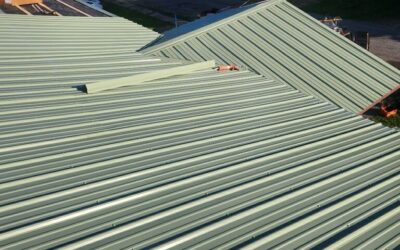How Many Roofing Nails Per Square: A Guide to Proper Roofing Installation
When installing a roof, one of the most important elements that can ensure the roof’s longevity and effectiveness is the proper use of roofing nails. Understanding the correct number of nails per square is crucial for both DIYers and professional roofing contractors. In this blog post, we’ll dive deep into how many roofing nails per square should be used, why it matters, and some best practices for roofing nail installation.
What is a Square in Roofing?
Before diving into the specifics of how many roofing nails are needed per square, it’s important to understand what a “square” is in roofing terms. In roofing, a square refers to a unit of area that covers 100 square feet. It’s a standard measurement used in roofing to determine the materials required for a roof installation or repair.
So, when a roofing project is being discussed, such as the number of shingles or roofing nails required, professionals will usually talk in terms of squares to make the calculations easier.
Importance of Roofing Nails
Roofing nails are used to secure roofing materials, such as shingles, to the structure of the roof. These nails play a crucial role in holding the shingles in place and ensuring the roof can withstand the elements, including wind, rain, and snow. The right roofing nails help maintain the integrity of the roof, while improperly installed nails can cause problems such as loose shingles, leaks, or even roof failure.
The type, length, material, and placement of nails are all key factors to consider in roof installation. Among these considerations, the number of nails per square is critical for ensuring the roof is stable and safe for years to come.
How Many Roofing Nails Per Square?
The number of nails required per square can vary depending on the type of shingles being installed and local building codes. In general, the number of nails per square can range from 240 to 480 nails, with most roofing professionals recommending 320 nails per square for standard asphalt shingles.
Asphalt Shingles: Standard Guidelines
For asphalt shingles, the general rule of thumb is to use four nails per shingle. Typically, three-tab asphalt shingles are the most common, and four nails per shingle is usually sufficient to secure them to the roof deck.
Since a roofing square consists of 100 square feet, the number of shingles required for a square will depend on the size of the shingles themselves. In the case of standard 12-inch by 36-inch asphalt shingles, approximately 30 shingles are needed per square (each shingle covers about 3.33 square feet). With four nails per shingle, this would result in 120 nails per square.
However, since the roof decking usually has several rows of shingles, roofing contractors will often install two or three rows of shingles at a time, adding more nails in the process. The final number will typically range between 240 to 480 nails per square, based on the number of rows and shingles in each row.
For higher-end shingles, like architectural or dimensional shingles, the number of nails per square may increase because they require additional support to prevent lifting and damage from high winds.
Architectural or Dimensional Shingles
Dimensional shingles, also known as architectural shingles, are designed with multiple layers to give the roof a more textured, high-end look. These shingles are thicker and heavier than traditional asphalt shingles, and therefore, require more nails for added stability.
With these shingles, contractors often use six nails per shingle, depending on the manufacturer’s guidelines and local codes. In this case, the total number of nails per square may range between 300 and 600 nails, depending on the installation pattern, type of shingles, and area coverage.
For instance, with six nails per shingle and around 30 shingles per square, the total would be around 180 nails. But remember, factors such as overlap and added security against wind can increase the total nail count.
Underlayments and Special Roofing Systems
While asphalt shingles are the most common, there are other roofing systems, such as tile, metal, and wood shakes, which may require different nail types or placement. For these roofing systems, the number of nails per square will vary.
- Tile Roofs: Tile roofs, particularly those made from clay or concrete, require special nails or fasteners designed to handle the weight and structure of the material. For tile roofing, the nail count per square can be significantly higher due to the need for more secure fastening.
- Metal Roofing: Metal roofing systems typically require screws rather than nails to fasten them securely to the roof. The screw count per square can vary, depending on the design and style of the metal panels.
- Wood Shakes: Wood shakes or shingles also require specialized nails that can handle the expansion and contraction of wood. These typically require more nails per square due to the thicker and less uniform nature of the material.
Nail Placement and Patterns
The number of nails used is important, but equally important is how and where those nails are placed. Incorrect nail placement can result in poor performance, with issues such as water leakage or shingles blowing off during heavy wind.
Standard Nail Placement
For asphalt shingles, the general placement involves four nails per shingle. These nails are typically placed 1 to 1 ½ inches from each edge and about ¼ to ½ inch above the cutout on the shingle. Ensuring that nails are placed correctly is crucial to prevent water from getting under the shingles and causing leaks.
Additionally, it’s important to nail through the thickest part of the shingle, which is the nailing strip, to avoid damaging the material. Nails should also be driven straight and flush with the surface of the shingle; nails that are overdriven or underdriven can lead to poor performance.
Wind Resistance and Nail Patterns
One of the most critical factors in determining how many nails per square is ensuring the roof can withstand high winds. For areas prone to severe weather, roofing manufacturers and local building codes often require additional fasteners for extra security.
In regions with high wind conditions, additional nails may be required for each shingle to improve wind resistance. The nail pattern may also change, with some areas requiring nails to be placed closer together or staggered for added support. For example, in some cases, six nails per shingle may be required instead of the standard four nails.
Special Nail Placement Tips
- Avoid Overdriving: It’s essential that nails be driven just enough to secure the shingles without puncturing or damaging the material. Overdriving nails can cause shingles to tear, while underdriven nails may not hold the shingles securely.
- Use Correct Nail Length: Nail length depends on the thickness of the shingles and the roofing material. The nails should penetrate through the shingles and into the roof deck, providing a secure hold. A standard 1 ¼-inch roofing nail is suitable for most asphalt shingles, but thicker or heavier materials may require longer nails.
- Nail Placement for Different Roof Types: For roof valleys, hips, and ridges, additional nails may be necessary to reinforce these areas, which are more susceptible to wind and water damage. Always refer to the manufacturer’s instructions for specific guidelines on these areas.
Factors Affecting Nail Count
Several factors can affect how many nails per square are necessary for proper roofing installation. These factors include:
- Shingle Type and Quality: Higher-quality shingles, such as architectural shingles, may require more nails to ensure long-term durability. Lower-grade shingles may need fewer nails but could suffer more wear and tear over time.
- Wind and Weather Conditions: In areas with frequent storms or high winds, additional nails per square may be required to keep the roof secure. Be sure to consult local building codes for additional requirements in your region.
- Roof Pitch: Steeper roofs may require additional nails to ensure that the shingles stay securely fastened. Roof pitch affects both the number of nails required and the angle of installation.
- Building Codes and Manufacturer Guidelines: Local building codes and manufacturer guidelines are essential in determining the exact number of nails per square. Always follow these guidelines for the best results.
- Roof Deck Material: The type of material used for the roof deck (such as plywood, OSB, or other materials) can influence the type and number of nails required.
Conclusion
Proper nail placement and the right number of nails per square are critical to the success of any roofing project. Whether you’re working with asphalt shingles, architectural shingles, or other roofing materials, following the recommended guidelines and adhering to local building codes will ensure that your roof performs well for years to come.
Remember that roofing nails serve a crucial role in securing your shingles to the roof deck, preventing wind damage, and ensuring that your roof remains durable against the elements. Whether you are a homeowner, a DIYer, or a professional roofer, understanding how many nails per square to use, as well as their correct placement, is essential for achieving a reliable, long-lasting roof.
For more information on roofing installation and quality roofing services, including the areas served by S&K Construction And Remodeling LLC, be sure to reach out to a trusted local contractor. A well-installed roof can protect your home for decades, so investing in the proper materials and methods is always worth it.
By following the correct guidelines and ensuring your roof is installed with the right number of nails, you can avoid future problems and enjoy a secure, long-lasting roofing system.
 (440) 307-2060
(440) 307-2060




